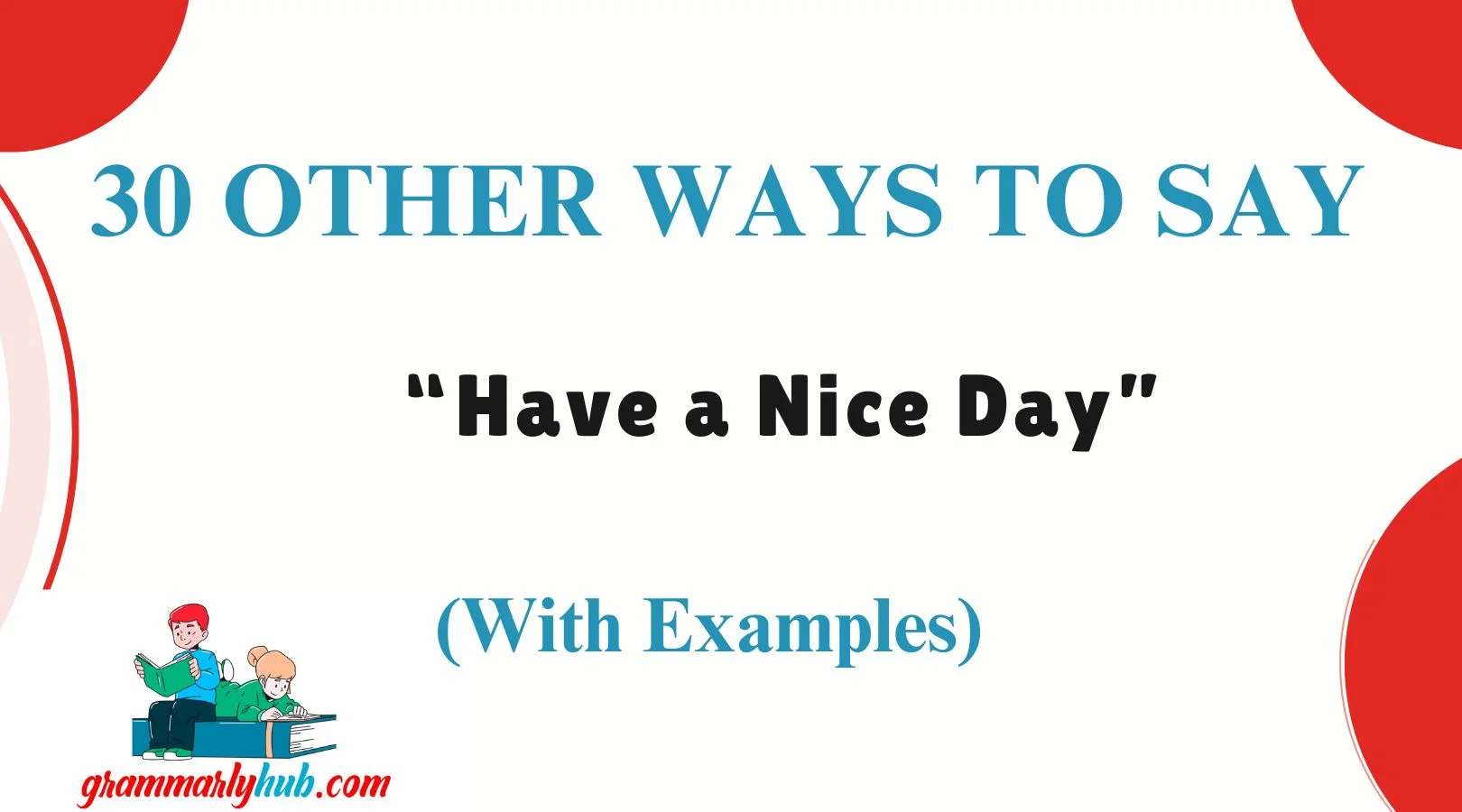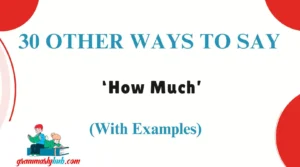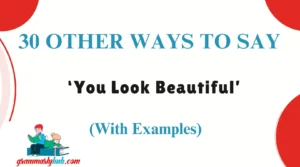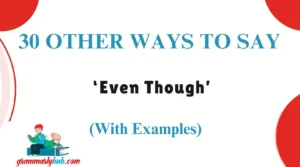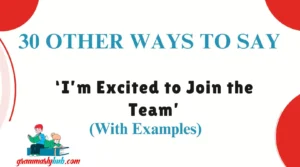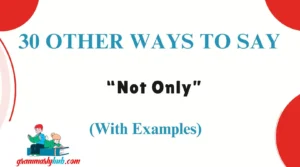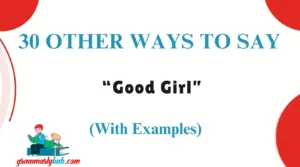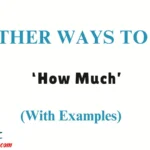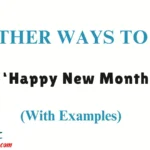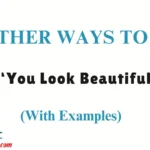Finding the right words to show kindness can truly brighten someone’s day. While “Have a nice day” is a classic, using more heartfelt or personalised phrases can create deeper, more meaningful connections. Whether you’re signing off an email, ending a phone call, or just finishing a friendly chat, these thoughtful alternatives help your words feel warmer and more genuine. This guide offers 30 unique ways to say it—with explanations, examples, and tips—so you can express care in a way that truly resonates.
What Does “Have a Nice Day” Mean?
“Have a nice day” is a polite and friendly expression used to wish someone well, usually when parting ways or ending a conversation. It conveys goodwill and positivity, often signaling that the speaker hopes the other person enjoys the remainder of their day. Warm, casual, polite, and commonly used in both personal and professional settings.
When to Use “Have a Nice Day”
Best Used:
- At the end of a conversation
- In customer service interactions
- In casual messages or emails
- When you want to leave someone with a positive thought
Avoid When:
- In deeply emotional or formal settings, where something more tailored may be appropriate.
Is It Professional/Polite to Say “Have a Nice Day”?
Yes, it is both professional and polite—but also very common. While safe and friendly, it may sound generic if used too often. Using a more thoughtful variation can leave a stronger impression.
Pros and Cons
Pros:
- Universally understood
- Friendly and polite
- Appropriate for almost any situation
Cons:
- Can sound generic or impersonal
- Overused in some contexts
- Less effective in emotional conversations
Synonyms For “Have a Nice Day”
- Enjoy the rest of your day
- Wishing you a lovely day ahead
- Take care
- Have a wonderful one
- Make today amazing
- Wishing you the best today
- Stay safe out there
- Hope today treats you kindly
- May your day be full of joy
- Here’s to a beautiful day
- Make it a great one
- Have an awesome day
- Keep smiling today
- Be well
- Sending good vibes your way
- Have a peaceful day
- Hope your day goes smoothly
- Enjoy every moment today
- Be kind to yourself today
- Soak up some sunshine today
- May your day be full of surprises
- Sending you warmth for the day
- Wishing you a productive day
- Have a day as amazing as you are
- Make the most of today
- Let today be a fresh start
- Shine bright today
- Take it one step at a time
- Hope your day brings smiles
- Here’s to good moments today
Enjoy the rest of your day
Definition: A warm sign-off that encourages someone to find joy in the time left in their day.
Detailed Explanation: This phrase shows attentiveness and care by acknowledging the ongoing part of someone’s day.
Scenario Example: “Thanks again for your help. Enjoy the rest of your day!“
Worst Use: Not suitable if the person is having a terrible day and has expressed that already.
Tone: Friendly, caring, and positive.
Wishing you a lovely day ahead
Definition: A kind and slightly more formal version of “Have a nice day.”
Detailed Explanation: Perfect for emails or polite conversation when you want to sound considerate and elegant.
Scenario Example: “It was great chatting with you. Wishing you a lovely day ahead.“
Worst Use: May sound too polished in a casual text to a close friend.
Tone: Warm, polite, slightly formal.
Take care
Definition: A short but sincere way of expressing concern for someone’s well-being.
Detailed Explanation: Though often used in parting, this phrase feels personal and protective.
Scenario Example: “I’ll see you next week—take care!“
Worst Use: May seem abrupt if used without context.
Tone: Caring, casual, affectionate.
Have a wonderful one
Definition: An upbeat and friendly expression wishing someone a great day.
Detailed Explanation: This version adds a touch of flair and excitement.
Scenario Example: “That’s all for now. Have a wonderful one!“
Worst Use: Could confuse someone unfamiliar with the informal phrase “one” referring to “day.”
Tone: Lively, cheerful.
Make today amazing
Definition: An encouraging, uplifting phrase that motivates someone to take charge of their day.
Detailed Explanation: Goes beyond wishing—invites action and positivity.
Scenario Example: “You’ve got this! Make today amazing.“
Worst Use: If someone is dealing with a tough emotional day, it may feel dismissive.
Tone: Motivational, energetic.
Wishing you the best today
Definition: A gentle and respectful way to show support and kindness for the person’s day ahead.
Detailed Explanation: This phrase feels intentional, making it ideal for both personal and professional communication.
Scenario Example: “Thanks for reaching out. Wishing you the best today!“
Worst Use: May sound overly formal in a lighthearted, casual exchange.
Tone: Supportive, kind, respectful.
Stay safe out there
Definition: A caring message, often used when someone is heading out or facing uncertain conditions.
Detailed Explanation: Adds a personal touch of concern, especially in today’s fast-paced world.
Scenario Example: “Drive carefully, okay? Stay safe out there!“
Worst Use: Unnecessary if the person isn’t going anywhere or in a safe setting.
Tone: Caring, slightly protective.
Hope today treats you kindly
Definition: A poetic and gentle wish for someone to experience a smooth, positive day.
Detailed Explanation: Ideal for friends or colleagues who appreciate thoughtfulness in language.
Scenario Example: “I know things have been tough lately. Hope today treats you kindly.“
Worst Use: May feel too sentimental for formal or business conversations.
Tone: Empathetic, warm, poetic.
May your day be full of joy
Definition: A heartfelt way to wish someone happiness throughout the day.
Detailed Explanation: This version is cheerful and fits well in uplifting messages.
Scenario Example: “Sending hugs your way—may your day be full of joy.“
Worst Use: Avoid when someone is grieving or going through serious issues.
Tone: Uplifting, joyful.
Here’s to a beautiful day
Definition: A toasting-style phrase that sets a hopeful and celebratory tone.
Detailed Explanation: This can sound poetic and adds elegance to your message.
Scenario Example: “We finally wrapped up the project! Here’s to a beautiful day.“
Worst Use: May sound overly stylized in very casual chats.
Tone: Optimistic, refined.
Make it a great one
Definition: Encourages the person to actively shape their day into something great.
Detailed Explanation: Ideal for messages where you want to energize or motivate.
Scenario Example: “Hope your presentation goes well—make it a great one!“
Worst Use: Avoid if someone is already overwhelmed or anxious.
Tone: Positive, energizing.
Have an awesome day
Definition: A more exciting, modern twist on “Have a nice day.”
Detailed Explanation: This version feels upbeat and friendly, great for everyday use.
Scenario Example: “Talk soon, buddy. Have an awesome day!“
Worst Use: May not suit very formal or solemn situations.
Tone: Lively, fun, youthful.
Keep smiling today
Definition: A gentle reminder to find joy and hold onto positivity.
Detailed Explanation: Simple, warm, and emotionally uplifting.
Scenario Example: “I loved your energy this morning—keep smiling today!“
Worst Use: Insensitive if someone is having a particularly hard day.
Tone: Encouraging, soft, friendly.
Be well
Definition: A concise and classic sign-off that conveys health and goodwill.
Detailed Explanation: Often used in emails or conversations with a peaceful tone.
Scenario Example: “It’s been a pleasure working with you—be well.“
Worst Use: Too subtle for celebratory or highly enthusiastic messages.
Tone: Peaceful, polite, thoughtful.
Sending good vibes your way
Definition: A light-hearted and trendy way to wish someone a positive day.
Detailed Explanation: Great for casual settings or when you want to add a cheerful note.
Scenario Example: “You’ve got a big day ahead—sending good vibes your way!“
Worst Use: Avoid in professional or highly formal settings.
Tone: Modern, cheerful, informal.
Have a peaceful day
Definition: A calming alternative that emphasizes serenity and well-being.
Detailed Explanation: Excellent for friends or coworkers who may be feeling overwhelmed.
Scenario Example: “You deserve some rest today—have a peaceful day.“
Worst Use: May not suit upbeat, high-energy conversations.
Tone: Calm, gentle, reassuring.
Hope your day goes smoothly
Definition: A considerate message wishing someone a hassle-free day.
Detailed Explanation: Practical and empathetic—shows real thought about their experience.
Scenario Example: “With everything on your plate, hope your day goes smoothly.“
Worst Use: Not very suitable for celebratory messages.
Tone: Supportive, thoughtful.
Enjoy every moment today
Definition: Encourages mindfulness and appreciation throughout the day.
Detailed Explanation: A phrase that works well for loved ones or deeper conversations.
Scenario Example: “It’s your big day—enjoy every moment today!“
Worst Use: Avoid if the person is stressed or anxious about the day.
Tone: Mindful, warm.
Be kind to yourself today
Definition: A reminder to practice self-compassion, especially during tough times.
Detailed Explanation: Useful for people under pressure or dealing with emotional strain.
Scenario Example: “I know you’ve been stressed—be kind to yourself today.“
Worst Use: Too personal for very professional exchanges.
Tone: Compassionate, empathetic.
Soak up some sunshine today
Definition: A playful and uplifting way to encourage someone to enjoy the outdoors or find some joy.
Detailed Explanation: This one works well for spring and summer days or upbeat notes.
Scenario Example: “Beautiful weather out—soak up some sunshine today!“
Worst Use: Inappropriate if the weather is gloomy or the recipient is indoors.
Tone: Playful, bright, cheerful.
May your day be full of surprises
Definition: A whimsical way to wish someone a joyful and unexpected delight.
Detailed Explanation: Great for birthdays or celebratory moments.
Scenario Example: “It’s your big launch—may your day be full of surprises!“
Worst Use: Not suited for someone looking for stability or predictability.
Tone: Festive, cheerful.
Sending you warmth for the day
Definition: A cozy and affectionate phrase that implies emotional support.
Detailed Explanation: Can help uplift someone who’s feeling low or alone.
Scenario Example: “Thinking of you today—sending you warmth for the day.“
Worst Use: Too sentimental for professional emails.
Tone: Tender, emotional.
Wishing you a productive day
Definition: Ideal for professional or academic settings, wishing someone focus and progress.
Detailed Explanation: Helps set a tone of encouragement without being overly emotional.
Scenario Example: “Hope your meeting goes well—wishing you a productive day.“
Worst Use: Avoid if the person is off work or resting.
Tone: Motivational, professional.
Have a day as amazing as you are
Definition: A deeply personal and kind compliment disguised as a day wish.
Detailed Explanation: Perfect for close friends or loved ones.
Scenario Example: “You’ve been a star lately—have a day as amazing as you are!“
Worst Use: Can be overly familiar in formal situations.
Tone: Affectionate, warm.
Make the most of today
Definition: Encourages a proactive and appreciative mindset.
Detailed Explanation: Balances warmth with purpose—ideal for many situations.
Scenario Example: “It’s a fresh start—make the most of today.“
Worst Use: Too casual for formal, corporate settings.
Tone: Optimistic, empowering.
Let today be a fresh start
Definition: Suggests renewal, great for someone coming out of a tough time.
Detailed Explanation: Supportive, forward-looking, and emotionally helpful.
Scenario Example: “You’ve got a clean slate—let today be a fresh start.“
Worst Use: Might feel too personal if not appropriate to context.
Tone: Hopeful, sincere.
Shine bright today
Definition: A playful and positive encouragement to stand out and be confident.
Detailed Explanation: Good for uplifting someone’s spirits or encouraging boldness.
Scenario Example: “You’re going to do great—shine bright today!“
Worst Use: Avoid extremely formal conversations.
Tone: Cheerful, bright, supportive.
Take it one step at a time
Definition: A soothing phrase for someone feeling overwhelmed.
Detailed Explanation: Gently promotes balance, patience, and progress.
Scenario Example: “No pressure—take it one step at a time.“
Worst Use: Not great for celebratory or high-energy notes.
Tone: Reassuring, kind.
Hope your day brings smiles
Definition: Wishing for moments of happiness and ease throughout the day.
Detailed Explanation: Subtle, kind, and visually expressive.
Scenario Example: “You deserve something good—hope your day brings smiles.“
Worst Use: Too light for deeply emotional contexts.
Tone: Warm, cheerful.
Here’s to good moments today
Definition: A balanced phrase that’s both thoughtful and realistic.
Detailed Explanation: Recognizes that not every day is perfect, but good moments still matter.
Scenario Example: “Whatever comes your way—here’s to good moments today.“
Worst Use: Can seem passive in highly motivating or strategic settings.
Tone: Hopeful, grounded, mature.
Conclusion
In a world full of routine expressions, finding thoughtful ways to say “Have a nice day” helps you connect with people on a deeper level. Whether you’re speaking to a colleague, a friend, or a loved one, these alternatives offer empathy, care, and intention. Choose what fits the moment and your relationship—and let your words uplift others in a way that truly feels personal.
FAQs
1. What is the best alternative to saying “Have a nice day”?
The best alternative depends on your tone and setting. For professional environments, phrases like “Wishing you a productive day” or “Be well” are polished and respectful. In casual settings, warmer options like “Hope today treats you kindly” or “Sending good vibes your way” feel more personal and heartfelt.
2. Can I use these alternatives in professional emails?
Yes! Several of these phrases are perfectly appropriate for professional use. Examples include:
- “Wishing you the best today”
- “Have a peaceful day”
- “Be well” Avoid overly casual options like “Shine bright today” or “Sending good vibes” unless you know the recipient appreciates a more relaxed tone.
3. Are these phrases suitable for text messages or social media?
Absolutely. Many of these alternatives work well in texts, captions, DMs, or replies. Options like “Enjoy every moment today”, “Stay safe out there”, or “Hope your day brings smiles” are quick to type and emotionally meaningful, making them great for casual and social use.
4. How do I choose the right tone when replacing “Have a nice day”?
Start by asking:
- Is this message formal or casual?
- Do I want to be supportive, inspiring, or friendly? Match the alternative accordingly. For example:
- Supportive: “Take it one step at a time”
- Inspiring: “Make the most of today”
- Friendly: “Hope today treats you kindly”
5. Why should I stop saying “Have a nice day”?
There’s nothing wrong with “Have a nice day,” but it can feel automatic and impersonal. Using unique, thoughtful alternatives helps your message stand out and shows genuine care or interest. Whether you’re speaking to a colleague, friend, or customer, your words can make a real impact when chosen intentionally.

Emma Brooke is the voice behind Grammarly Hub, where grammar meets clarity. With a deep passion for the written word, Emma helps readers navigate the tricky waters of English grammar, writing tips, and effective communication.
